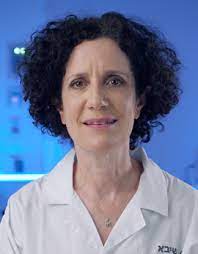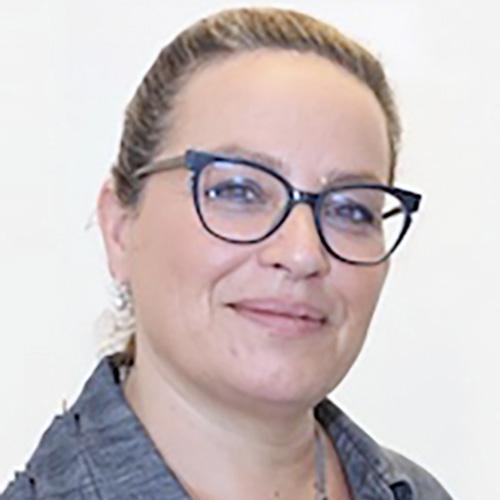Mammology
Mammology is a branch of practical medicine that deals with the study, diagnosis, treatment and prevention of mammary glands diseases. This is extremely important direction in modern medicine and the foundation of a Department of Mammology in a multidisciplinary medical center cannot be overestimated, since mammary glands malignant tumors setting the first place among all oncological causes of premature death in women.

An integral part of successful functioning of the Department of Mammology is the direct control of each individual clinical case by our Israeli mentor colleagues. If necessary, each breast oncologist can consult with an experienced specialist, and recive an online consultation for his patient.
Often, the treatment of breast cancer is an expensive process, as it requires the application of the entire arsenal of modern surgery, radiation therapy, chemotherapy and other effective methods. If our patient is not able to pay for the necessary medical services on her own, she can count on financial support, because Maimonides Multidisciplinary Medical Center works under the guidance of “Keren Or for our Child” the Charitable Foundation, which covers either the full cost of vital therapy or partially covers it. The fund's assets are supplemented by voluntary contributions from caring companies and ordinary people.
Breast cancer
Breast cancer setting the 1st place in the structure of malignant neoplasms in women. Over the past 30 years, the incidence rate has increased 2.5 times. Every year, more than 16,000 new cases of breast cancer are registered in Ukraine, of which 24.5% are women of reproductive age. Such sad statistics make this problem extremely urgent, which is why all our diagnostic programs are aimed at early detection and prevention of this disease.
Every woman should regularly undergo preventive examinations by a mammologist with mammary glands ultrasound or mammography, depending on age. Women from the malignant neoplasms of mammary glands risk group should be especially meticulous about their health.
There are such risk groups of breast cancer development:
- age over 40 years;
- hereditary disease history (cases of breast cancer in the family);
- early menarche (beginning of menstruation);
- late menopause;
- birth of a first-born child over the age of 30;
- absence of pregnancy and birth of children;
- existing background and precancerous diseases of the mammary glands (fibroadenoma, fibrocystic mastopathy, other proliferative breast diseases);
- obesity;
- diabetes;
- hypertensive disease;
- systematic alcohol consumption;
- smoking;
- ovaries cancer or other genital organs cancer in the anamnesis;
- carrier of BRCA1 and BRCA2 gene mutations.
There are several types of malignant diseases of the mammary glands – nodular and diffuse form, Paget's cancer, and others. As a rule, the disease does not manifest itself in the early stages. A woman can suspect something wrong by herself during a mammary glands regular self-assessment.
The following symptoms should alert:
- The appearance of compactions, hardenings, nodes in the thickness of the mammary gland.
- The appearance of wrinkling of the skin in a certain area of the chest, lumpiness or indentation (as if the navel).
- Pain in the area of the nipple, pathological discharge from it (especially bloody), peeling or ulcers of the areola and the skin around it, pulling the nipple inward.
- Unilateral enlargement of the mammary gland, its swelling or deformation, the appearance of lumps under the armpit.
- Breast pain (mastodynia) is rarely a sign of cancer, contrary to popular belief.
If you have the risk factors for malignant breast diseases described above or such disease symptoms, do not delay. You should contact the Department of Mammology at Maimonides Medical Center. Our specialists will help to make the necessary range of diagnostics and, if necessary, an effective treatment plan.

Diagnostic methods in the Department of Mammology
Our specialists conduct fast and comprehensive diagnostic programs thanks to the most modern equipment of expert class and practical experience gained from their Israeli mentor colleagues. In the department, you can get any necessary diagnostic procedure. If the doctors do not have enough experience in conducting it or the necessary equipment is not available, the patient is referred to affiliated medical centers or Maimonides partner clinics.
The first stage of the diagnostic search is mammary glands ultrasound in women under 40 years age and X-ray mammography after 40 years age. These two studies complement each other, but are not interchangeable. If any changes in the mammary glands are not detected, as a result, the woman is sent home with recommendations for a healthy lifestyle and prevention of malignant breast diseases. If certain changes are detected, the woman is referred for further examination. It can be CT, MRI, PET-CT, ductography, scintigraphy, biopsy and others (depending on the previous diagnosis).
1. Genetic diagnosis of BRCA1 and BRCA2
The BRCA1 BRCA2 genes are suppressors. It means that they regulate the process of correct cell division and trigger the repair of DNA in case of DNA damage. If there are mutations in these genes, they do not perform their function. Accordingly, the risk of breast cancer and cancer of other locations (ovaries, prostate in men, pancreas, uterus, melanoma, leukemia) increases significantly. About 6-10% of breast cancer and 10% of ovarian cancer are associated with mutations in these genes.
Testing for mutations is not recommended for everyone. First, most labs detect only a small number of possible mutations, so even if you get tested and get a negative result, that doesn't guarantee you don't have a mutation.
When should you be examined?
- The age of cancer detection is less than 45 years.
- Certain types of breast cancer tumors by histology.
- Diagnosed with cancer of 2 mammary glands or a combination of breast cancer and ovarian cancer.
- Family history of breast cancer or ovarian cancer (at an early age under 50 years), prostate cancer in male relatives, breast cancer in men in the family.
- If a relative has this mutation.
Special attention should be paid to those who have multiple cases of breast cancer, ovarian cancer and their combination with other tumors (prostate cancer, melanoma, pancreatic cancer) in the family (one or more relatives).
2. Mammography
It is conducted once every 2 years, starting from the age of 40 or after the age of 25-35, if the woman is in the group of high, not medium, risk of breast cancer. After 50 years – mammography every year.
Mammography is an X-ray examination of the mammary glands.
The advantages of this method are good visualization and informativeness, the availability of documentary evidence, which allows you to evaluate the dynamics and create an archive of images.
Cons – poor visualization with dense mammary glands – when glandular tissue are dominated in the structure of mammary glands, not fatty tissue.
3. Ultrasound of mammary glands
This is a very informative and safe methodthat can be used by everyoneed, as well as in cases where mammography is uninformative or contraindicated (pregnant, nursing mothers, young women with high density of glandular tissue, when mammography visualization is difficult).
There are also disadvantages. Most often mammary glands cancer, on ultrasound, has the characteristics of hypoechoic (looks the same as adipose tissue). Therefore, in perimenopause and menopause, when the main part of the mammary gland is replaced by fatty tissue, ultrasound is not very informative in terms of screening for breast cancer. Also it is not possible to create a high-quality archive of images, since the position and size of the formations completely depend on the position of the patient and the position of the ultrasound sensor of the device. When the sensor is moving, the size of the formation will change. It does not allow to assess the dynamics with the same accuracy as with mammography.
4. Puncture biopsy
Breast puncture is a minimally invasive but quite traumatic procedure, so it is provided in an inpatient setting and takes about 1 hour. If the patient wishes, doctors of our medical center perform local or general anesthesia, to minimize discomfort and pain during the procedure.
All doctors of our center are familiar with ultrasound examination techniques, so all punctures are performed under ultrasound control. It makes it possible to be sure that the tissue is taken from the right place and no adjacent anatomical structure is affected.
Samples of biological material are sent for testing to Israeli, American or German affiliated medical centers or partner clinics. Thanks to such double "molecular checks", we are absolutely sure of final diagnosis correctness and effectiveness of the individually selected treatment regimen.

Treatment Methods in the Department of Mammology
Undoubtedly, the main method of treatment in mammology is a surgical intervention. Thanks to early diagnosis and modern effective methods of therapy, patients have the opportunity to completely recover from the disease and at the same time preserve the mammary glands.
1. Surgical treatment
Our doctors try to perform only organ-sparing operations (that is, without removing the entire mammary gland). Surgical interventions of the new generation make it possible to effectively cut out all the pathological tissue and preserve the surrounding healthy breast tissue as completely as possible.
Our oncologists-mammologists specialist perfectly possess the technique of such modern organ-preserving operations on the mammary glands as:
- hemi mastectomy with lymphadenectomy,
- lumpectomy,
- radical sectoral resection (according to Blokhin),
- quadrantectomy with lymphadenectomy,
- subtotal resection with lymphadenectomy,
- subcutaneous mastectomy with lymphadenectomy.
In the case when an organ-preserving intervention cannot be performed, a mastectomymastectomy is used. This is a radical and complete removal of the mammary gland.
Depending on the specific clinical situation, the spread of the tumor process and the surgeon's technique, following types of mastectomy are performed:
- Madden radical mastectomy,
- Halsted radical mastectomy,
- Pate radical mastectomy,
- extended radical modified mastectomy,
- extended radical axillary-thoracic mastectomy,
- Pirogov mastectomy.
If necessary, mammological surgeons, and often plastic surgeons involved in the treatment of women with cancer, perform mammoplasty surgery ((breast gland reconstruction).Most often, patients need this service after radical treatment of breast cancer and mastectomy. It can be allpyed immediately as the final stage of complex surgical treatment of oncology, or it can be delayed in time, for example, after a full course of radiation or chemotherapy. A woman has the opportunity to completely restore her mammary glands together with a nipple reconstruction procedure.
Also, a plastic surgeon services of can be used by healthy women who want to have larger mammary glands, or, on the contrary, have a desire to reduce them.
2. Radiation therapy
Radiation therapy (remote or contact) is often used in the complex treatment of mammary glands malignant diseases. This is a treatment method in which malignant cells are destroyed under the action of ionizing (radial) radiation.
For breast cancer, such an irradiation method as brachytherapycan be used. At the same time, the radioactive material is placed in a capsule, which is implanted directly in the place of accumulation of malignant cells. Thus, we get the desired effect at the site of the tumor, while the surrounding healthy tissues are minimally affected by radiation.
3. Chemotherapy
This is a method of malignant tumors treating by injecting drugs into the body that stop the growth of malignant cells. As a rule, it is not used as monotherapy. Specialists combine chemotherapy with surgical interventions. Sometimes chemotherapy can be used as an independent method of treatment, but only with a palliative purpose.
For the treatment of cancer at the Maimonides Medical Center, only original drugs from well-known European, Israeli and American manufacturers are used ((docetaxel, doxorubicin, cyclophosphamide, herceptin, perieta).Due to the high quality of medicines, the risk of side effects is minimal.
4. Targeted therapy
This is a method of treatment with special antitumor drugs of the latest generation, which cannot be classified as classical representatives of chemotherapy. Targeted drugs(pertuzumab, tyverb)"target" specific malignant cells of a certain type of tumor. They block signaling within these parasitic cells, leading to their death.
5. Hormone therapy
Currently, hormone therapy for breast cancer, along with surgical, radiation, chemotherapy and other methods of treatment, is one of the main complex therapy components of this serious disease.
The choice of drugs is based on its safety and low toxicity, the sensitivity of tumor cells to the action of hormones. The introduction of effective hormonal drugs made it possible to abandon many disabling surgical interventions. For instance, analogues of gonadotropin-releasing hormones replaced ovariectomy (removal of the ovaries). Therefore, women with a history of breast cancer have the opportunity to save their ovaries (even those with a high risk of combined cancer), but may take hormones for a certain period of time, and after their abolition, become pregnant and bear healthy children on their own.
All patients of our medical center have the opportunity to become participants in clinical studies using experimental innovative drugs and breast cancer treatment methods. Participation in the program is free of charge, provided if the patient has all the necessary parameters for the study. For many women, this is a real chance for life, especially for those who have failed standard treatments.





